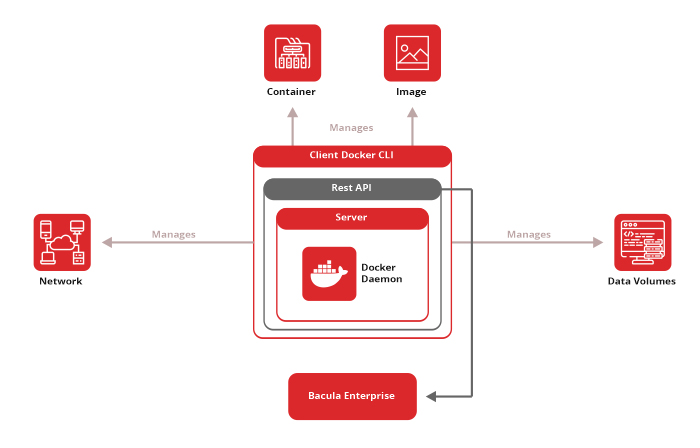The four major components of the bacula architecture are; the director, catalog, storage daemon and client. Each bacula architecture component serves different functions.
The Bacula architecture is structured depending on different interacting features that employ TCP sockets in their communication over all network connections.
Using TCP as a bacula architecture inter-component transfer method is vital for efficient easy running of multiple components depending on their capabilities. It also provides an ever-present inter-component command system.
The bacula architecture offers more advantage and flexibility to all system administrators. Administrators can manage more platforms, hybrid and heterogeneous environments.
Stability and scalability are also major merits offered by the bacula architecture.
Bacula architecture components
Director
The director is the first bacula architecture component that performs restore and backup jobs. It acts as the center of policy-based configuration activities or bacula deployment, the point of contact for various management tools and manages the catalog database.
The director process runs on most Linux distributions like red hat, Debian and Ubuntu.
All configurations in the director bacula architecture are stored as text files for easy editing by a text editor, web management tools or available automation tools that modify text files.

Other functions of the director as a bacula architecture are:
- Scheduling
- Dependency tracking
- Access control
- Reporting
Catalog
The Catalog is a bacula architecture component in a specific database which is only accessed by SQL updates, and queries. It is installed beside the director in small and medium environments.
The catalog stores different metadata for all backup activities. The information stored includes file names, permission dates, storage coordinates for all the information stored and global records for all the storage media.
The storage component
The function of the storage daemon as part of the bacula architecture, is writing the backup data to storage media.
The bacula architecture storage daemon mounts and unmounts storage volumes.
Administrative console
This is the bacula architecture console that performs management of processes, and handling messages. Operations for handling volumes are managed by the console.
The file bacula architecture
This is used to transfer the data of the clients to a specific server to be stored. It is installed on individual machines used for backing up. The file daemon is used for communication to know the storage location and the type of data to be backed up.
How Information moves among the Bacula architecture components
During the execution stage of the bacula architecture components, the director signals the file daemon to communicate with the necessary storage daemon. This process removes the director from a high traffic pathway of actual data backup.
The director maintains a normal schedule for the job to proceed without user commands. Job output is transferred to the administrator through email.
Authentication
Bacula architecture communication pathways use a password and component name. The passwords used in the bacula architecture configuration files are secret. These are used to during the authentication process passwords in the bacula architecture are not sent via network. The bacula architecture is configured with TLS.
Configuring the bacula architecture
Different components of the bacula architectural design have hidden configuration files. The configuration files consist of resource aspects used to define how various bacula components handle tasks.
Bacula architecture complex configurations that are automated and consist of different objects are divided into various files and are kept individually. The resources are edited through normal text editors.
An example of how bacula architecture components interact
This is what happens when a scheduled backup of an MS SQL database runs:
- The backup is initiated by the director scheduler
- The file daemon is contacted and the job information is handed over
- The client is informed to initiate a VSS snapshot
- The file daemon streams job to the storage daemon
- When database is backed up, the metadata is sent to the director to be stored in the catalog
Conclusion
Bacula architecture today, is made of a modern backup enterprise designed with high security in mind. The bacula architecture supports relational database catalogues, contains client support, robotic media libraries and disk backup.
Bacula architecture components include; the director, catalog, storage daemon, administrative console and client. Future bacula architecture is meant to have cloud interfaces that offer extensive restore and backup. Such aspects are meant to increase flexibility and save on costs for all clients.
Ultimately, bacula architecture allows effective control and monitoring of interaction between multiple components. Hence, daily backup tasks such as reporting and configuration management are made easier.